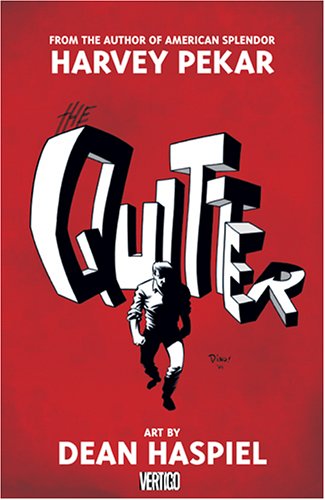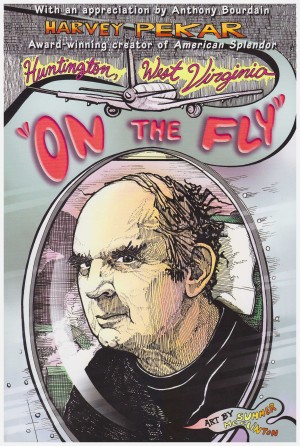Review by Graham Johnstone
After decades writing comics vignettes from his daily life in American Splendor, Harvey Pekar here tackles his earlier life as an original graphic novel.
Readers of Pekar’s work or those who’ve seen the excellent American Splendor film may have expected the thoughtful memoirs of a sensitive, bookish type. The life captured here is surprising. Growing up in the industrial, working class city of Cleveland, a Jewish boy left behind in an ethnically changing neighbourhood, he was bullied and had to find ways to survive.
Many American Splendor stories were illustrated by Pekar’s Cleveland neighbour, and underground comix genius Robert Crumb. The others looked weak in comparison, but one of the better artists was Dean Haspiel. He’s matured well, and illustrates this book like a more realistic, kitchen sink Jack Kirby. It’s not flashy, but art starts off solidly and becomes increasingly assured as the book progresses.
Haspiel’s got a classic brush inking style, with expressive lines, and a good blend of realism with cartooning. It’s a style developed for coloured comics, but this volume is monochrome, fleshed out with grey tones by Lee Loughridge, who makes a significant contribution to the success of the art. Mostly he just adds tone within the outlines, but there are a few clever effects, like the ghosted multiple images of punching arms in the scene with the German guy, and the greyed out figures leaving the table when “everyone disperses and goes to bed“.
Haspiel’s also good on the settings and props of Pekar’s life, benefiting perhaps by descriptions from the horses mouth. The large scene in a Greenwich Village Jazz Club is a highlight.
Pekar pioneered real-life stories in comics; stories known for their realism and honesty, and of course that’s the case here. Later creators built on this by highlighting the failings of the subject, and there’s also an element of that. As a loner, and last Jewish kid in the neighbourhood, Pekar was a target for bullies. He both became used to the beatings, and learned to defend himself. It’s perhaps a typical transition, but the bullies’ victim becomes the bully. Pekar tells us, in a matter of fact way, of the increasing number of fights he later got into purely to boost his reputation, indeed notoriety. The reader is left uncertain whether Pekar is reporting objectively what his younger self thought, or taking vicarious pleasure in it.
It’s called The Quitter because Pekar had a pattern of giving up because he felt too much pressure, or was afraid of failure, or used an aspiration to be the best as a justification to give up, in goal after goal. He goes from one course of learning or sports to another, from job to job, eventually settling for an undemanding but secure entry-level government job. Yet maybe that was the best thing for him: it let him pursue his interest in jazz music, becoming a local connoisseur and respected reviewer.
Of course, his non-career job would also provide the time and inclination for Pekar to develop his comics writing and publishing, but that’s dealt with only briefly in the latter pages, perhaps because from then on he was documenting it as he lived it.
This is an honest and unflinching telling of an interesting life, and for readers of graphic novels, an important life, and one that’s evocatively and wittily illustrated. The hardback has a nice embossed ‘Quitter’ logo under the dust-jacket.





